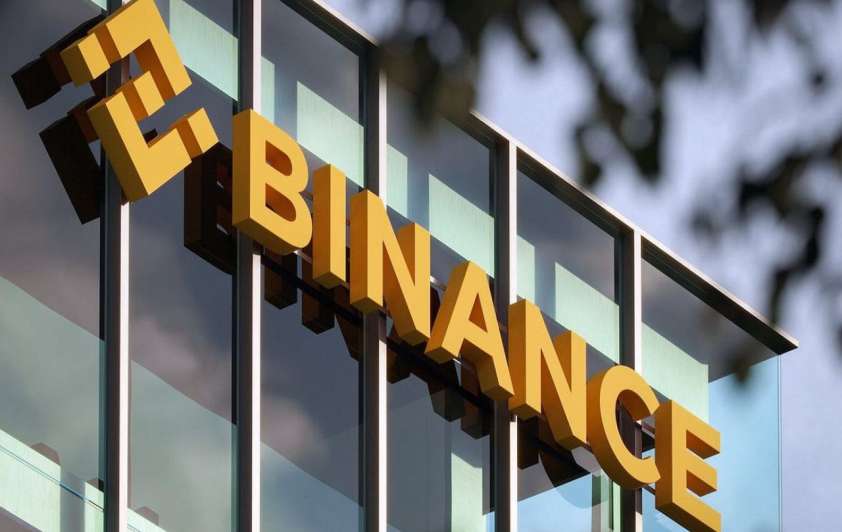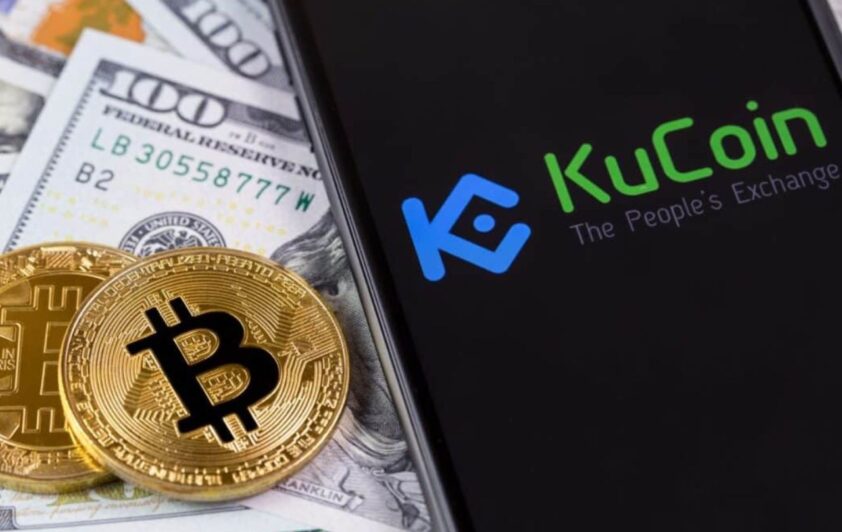



A crypto user has gone very long on Solana, staking a very small portion of the token for the next 3,000 years, according to blockchain analytics firm Arkham Intelligence.
The unknown user staked $0.05 Solana (SOL) in 2023, and it will unlock in the year 5138, Arkham said in an April 5 post to X.
Speaking to Cointelegraph, Vincent Liu, chief investment officer at Kronos Research, said the move was likely a symbolic sign of showing conviction in Solana’s long-term ecosystem.
Source: Arkham Intelligence
“Legacy staking is more than locking assets it’s a mindset. The real edge in crypto isn’t in chasing short-term hype, but in holding long-term conviction assets through cycles,” he said.
Adding that: “this kind of thinking builds not just portfolios, but long term legacies.”
SOL is currently trading for $102, according to CoinMarketCap. A January report from asset manager Bitwise predicts the token could be worth between $2,300 and over $6,000 by 2030.
It’s impossible to know what the staked SOL will be worth by the time it’s unlocked in a few thousand years, but Liu says it would likely be a significant sum.
“If SOL appreciates just 2–5% annually, the compounding over 3,000 years becomes exponential. In any market condition, long-term compounding remains one of the most powerful financial forces,” he said.
Staking Solana for over 3 millennia
To put it into perspective, 5 cents compounded annually at a 3% annual interest rate would already result in over $486 undecillion (486 followed by 36 zeros) after 3,115 years.
However, the Solana sum would likely be much higher, given staking rewards are paid out every two to three days and compounded.
Users on X are speculating that the stake could be an attempt at creating generational wealth, or a random stunt with no real long-term plan.
Source: Arkham Intelligence
Kadan Stadelmann, chief technology officer at blockchain platform Komodo, told Cointelegraph he thinks the “3,000-year nickel play on SOL is a meme trade” that will one day be stamped on the SOL blockchain.
Related: Solana TVL hits new high in SOL terms, DEX volumes show strength — Will SOL price react?
“What will 3,000 years from now look like? Will humans still be around? Will the Solana blockchain? Such a long time horizon makes one ponder one’s place in the scheme of things,” Stadelmann said.
He speculates people might even seek to outdo it by “making a 5,000-year play.”
At the moment, depending on the platform and validator choice, Solana offers between 5% to 8% in staking rewards. Meanwhile, Cardano (ADA) starts at around 2%, and Ether (ETH) staking rewards are between 2% and 7%.
Four Solana whales recently profited over $200 million in a staking play that began in April 2021, when they staked 1.79 million Solana, worth $37.7 million at the time.
A similar unlock is expected in 2028.
Magazine: Bitcoin heading to $70K soon? Crypto baller funds SpaceX flight: Hodler’s Digest, March 30 – April 5

The crypto world reeled in 2022 as hackers stole $586 million from Binance’s BNB Chain, exploiting a bridge vulnerability. The breach ranked as the third-largest crypto heist, which triggered an eight-hour network freeze, leaving users locked out and questioning the chain’s “decentralised” claims. Here’s how chaos unfolded. How A Flaw in the System led to Bridge Exploit On October 6,…



An Ether investor who had a large position on decentralized finance (DeFi) lending platform Sky has been liquidated to the tune of more than $100 million as the price of Ether crashed.
The Ether (ETH) whale lost 67,570 ETH worth around $106 million when the asset crashed by around 14% on April 6, liquidating his collateralized debt position on Sky, according to Maker Vaults explorer DeFi Explore, and as observed by Lookonchain.
The Sky lending protocol, which rebranded from Maker in August, is used by DeFi participants to create collateralized debt positions by providing crypto, ETH in this case, to borrow the platform’s stablecoin, DAI (DAI).
The system uses an overcollateralization ratio, typically 150% or higher, meaning that users need to deposit at least $150 worth of ETH to borrow 100 DAI.
The protocol autonomously monitors the value of ETH collateral relative to the borrowed DAI, and if the ETH value falls and the collateral ratio drops below the minimum requirement, the position becomes eligible for liquidation.
This whale’s liquidation occurred when the ratio fell to 144% as the price of ETH plummeted.
ETH whale liquidations. Source: DeFi Explore
Meanwhile, Spot On Chain reported that another whale that supplied 56,995 wrapped ETH, worth around $91 million, to borrow DAI was on the verge of liquidation.
In a liquidation event, Sky seizes the ETH collateral, which is auctioned off to pay back the borrowed DAI plus fees. Any remaining collateral after the debt is paid is returned to the user.
Ethereum price at bear market lows
ETH prices have crashed a whopping 14.5% over the past 24 hours, falling to $1,547 at the time of writing as the wider crypto market melts down in reaction to US President Donald Trump’s tariff-induced market sell-off.
The last time ETH traded this low was in October 2023, when crypto was still deep in bear market territory, almost a year after the collapse of the FTX exchange.
ETH remains down 68% from its all-time high in 2021, and further losses are likely to see more DeFi users liquidated unless they can provide more collateral.
Related: Bitcoin price drops below $80K as stocks face 1987 Black Monday rerun
According to CoinGlass, 320,000 traders have been liquidated over the past 24 hours to the tune of almost $1 billion dollars. The majority of liquidations over the past four hours have been ETH positions, it revealed.
Magazine: Bitcoin heading to $70K soon? Crypto baller funds SpaceX flight: Hodler’s Digest

The cryptocurrency market recorded another week of losses spurred by President Donald Trump’s sweeping new tariff measures. However, some unconventional coins bucked the trend with healthy returns.
What happened: EOS, the native token of the open-source blockchain EOS Network, led the market with a 20% rally, extending its monthly gains to almost 30%.
The rally was spurred by the network’s decision to rebrand to Vaulta, a network focusing on Web3 banking and real-world asset tokenization.



A defendant in a New York appeals court has been slammed by a judge for using an artificial intelligence avatar to represent himself in a recent case.
A New York appeals court faced an unusual situation in late March when Jerome Dewald, representing himself in an employment dispute, submitted an AI-generated avatar to present his legal arguments via video, a livestream of the hearing shows.
It’s the latest example of artificial intelligence tools trickling their way into courtrooms.
Within seconds of the video starting, Justice Sallie Manzanet-Daniels called for it to stop, asking whether the avatar was counsel for the case.
“I generated that,” 74-year-old Dewald responded, adding, “That is not a real person.”
The judge appeared displeased, retorting, “It would have been nice to know that when you made your application,” stating that the defendant had previously appeared before the court and been able to testify verbally in the past.
“I don’t appreciate being misled,” the judge added.
She asked the defendant if he was suffering from an ailment that prevented him from articulating before adding, “You are not going to use this courtroom as a launch for your business,” and then yelling, “Shut that off,” pointing to the video screen.
Appellate Division, First Department Stream. Source: YouTube
Dewald later apologized, explaining he thought the AI avatar would deliver his arguments more eloquently than he could.
Speaking to The Associated Press, Dewald said he applied to the court for permission to play a prerecorded video, then used a San Francisco tech company to create the AI avatar.
He originally tried to generate a digital replica of himself but was prevented by time constraints before the hearing. “The court was really upset about it,” Dewald conceded, adding, “They chewed me up pretty good.”
Related: Meta’s Llama 4 puts US back in lead to ‘win the AI race’ — David Sacks
AI entering the legal world
The incident highlights growing challenges as AI enters the legal world.
In 2023, a New York lawyer was blasted for citing fake cases generated by ChatGPT in a legal brief as part of a lawsuit against a Columbian airline.
In March, Arizona’s Supreme Court began using two AI-generated avatars, similar to the one that Dewald used in New York, to summarize court rulings for the public.
In September, the US Federal Trade Commission took action against companies it claimed misled consumers using AI, including a firm that offered an AI lawyer.
Magazine: ‘Chernobyl’ needed to wake people to AI risks, Studio Ghibli memes: AI Eye

As Ethereum (CRYPTO: ETH) continues its downward slide since Eric Trump recommended buying the second-largest cryptocurrency, renowned economist Peter Schiff cautioned against taking investment advice from the Trump family on Sunday.
What Happened: Schiff was reminded by an X user of the famous “It’s a great time to add ETH” remark by Eric Trump, the Executive Vice President of The Trump Organization and President Donald Trump’s second son.
“Yes, it’s best not to take any investment advice from the Trumps,” Schiff stated.
Schiff’s views were countered by another user, JB rocks, who wondered if the cryptocurrency critic would say the same if the Trumps promoted …

On September 25, 2020, KuCoin with millions in digital assets, marking one of history’s largest exchange breaches. Stolen funds included Bitcoin, Ethereum, and stablecoins, shaking investor trust. By morning, CEO Johnny Lyu halted withdrawals, vowing full reimbursement. At the same time, blockchain trackers scrambled to trace the loot. How Hackers Breached KuCoin’s Vaults The attackers exploited KuCoin’s hot wallet private…
